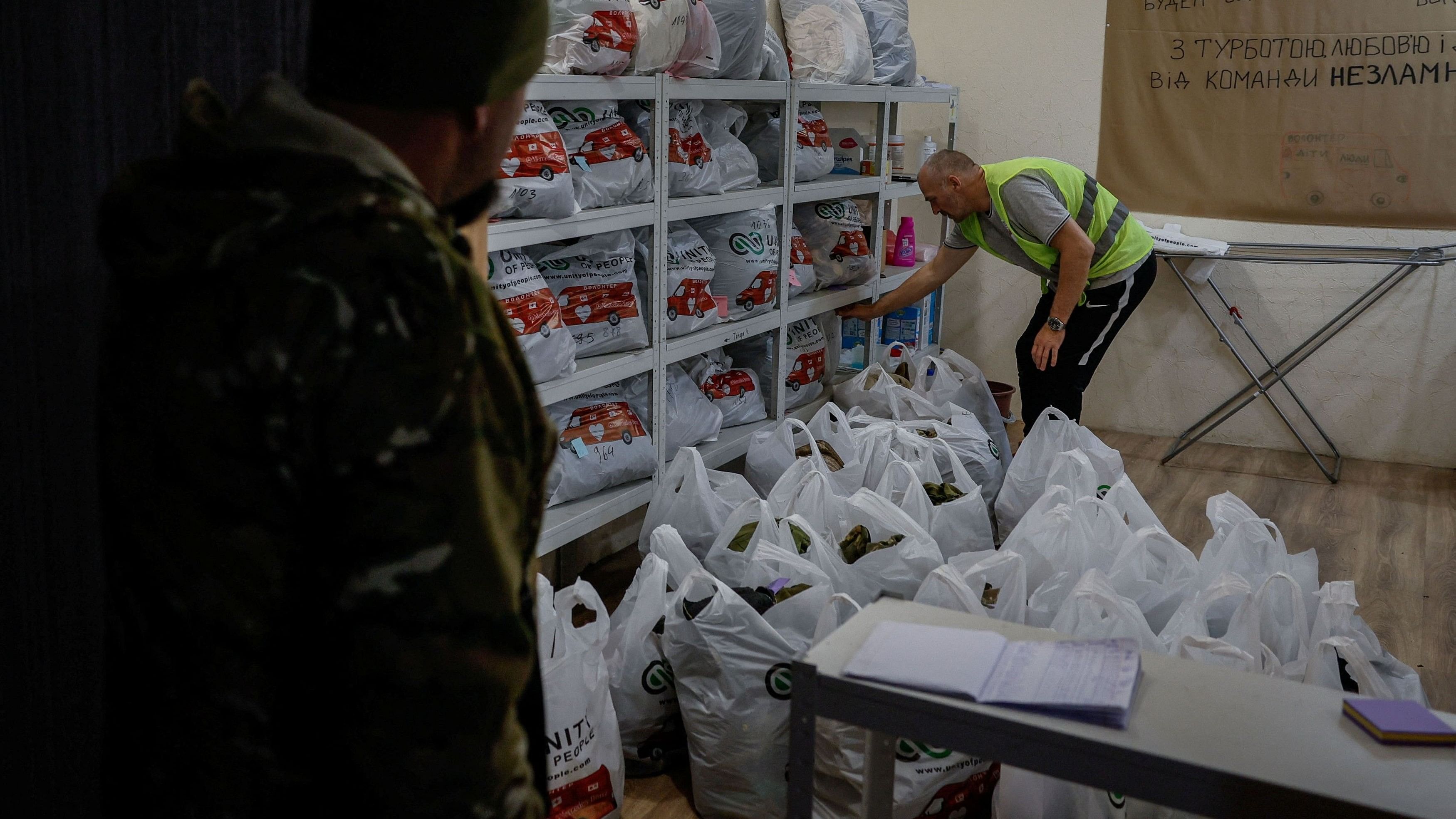
Representative image showing plastic bags at a store.
Credit: Reuters File Photo
By David Fickling
Remember a few years ago, when lots of places decided to ban plastic bags? Remember how we all stopped using them? Yeah, me neither.
Far from reducing the consumption of polymers and the associated pollution, prohibiting single-use shopping sacks may well be increasing both problems. Usage of plastic for grocery bags in New Jersey increased threefold after a 2022 ban, according to a study earlier this month by Freedonia, a market research company, pushing the emissions used in manufacturing them up about 41 per cent.
Anyone who has been at a post-ban checkout can work out the reason. Old-style disposable shopping bags, typically made from thin films of polyethylene, have indeed disappeared from many stores in recent years. In their place, however, we’re now paying cents and dollars for reusable carriers made from thicker, glossy polyethylene, waffle-like non-woven polypropylene, brown paper, or natural fibers such as cotton and jute.
The benefits to the environment from this shift are marginal at best. They may even be making things worse. That’s because the most relevant measure isn’t how many carriers get used, but how much material is consumed and how much pollution it causes.
An individual disposable plastic bag is far less damaging in terms of carbon, chemical pollution, algal blooms and water usage than reusable ones, whether natural or synthetic. The case against them is that we use so many more of them that the total footprint will be lower with reusables.
The evidence suggests it’s not working out that way, however. You need to use a reusable plastic bag 52 times before its environmental impact drops below that of a disposable one, according to a 2018 study by the Danish government, rising to 20,000 times for organic cotton. (The numbers are lower if you look only at carbon pollution — paper sacks need to be reused three times, climbing to 11 times for non-woven polypropylene and 131 times for cotton, a UK government study found.)
Our rising consumption of plastics for shopping bags suggests we’re not reusing at anything like that rate. More plastic was being consumed just for polypropylene bags after New Jersey’s ban than for all types of carrier beforehand. The same thing was observed after a 2016 California bag ban and a 2011 rule in the Australian capital Canberra.
UK supermarkets sold 1.58 billion reusable plastic bags in 2019, according to Greenpeace— equivalent to more than one per household per week, with the same environmental footprint in each home as hundreds or even thousands of traditional single-use carriers.
The problem for disposables is that (often staged) photographs of turtles choking on shopping bags are an iconic image of environmental degradation, making such carriers scapegoats for an entire throwaway culture. By transporting our shopping in brown paper, we’re able to feel we’re chalking up a small victory for the planet— even if the berries, yogurt, milk, chips, and meat in the sack are themselves packaged in yet more hydrocarbons.
There’s a mountain of misconceptions underlying this belief. For instance, microplastic— the tiny debris that is becoming so ubiquitous that it’s increasingly turning up in animal and human tissues— has very little to do with packaging. Ingested polymers are far more likely to come from clothing fibers, tire rubber, paint, and city dust.
Even larger bits of waste aren’t likely to be much affected by carrier bans. About 98 per cent of the material picked up in a 2018 study of the Great Pacific Garbage Patch, a region of ocean that hosts an estimated 79,000 metric tons of floating debris, was fishing tackle and fragments of hard plastics. Films and sheets like those produced from store bags comprised about 0.2 per cent of the total mass, possibly because they rapidly sink to the seafloor.
Hardly any of that detritus is attributable to the US, let alone New Jersey. Marine plastic mostly comes from short, fast-flowing rivers passing through large, middle-income cities that can’t afford to manage their waste properly. About 81 per cent of ocean polymers come from Asia, with more than a third emitted by the Philippines alone, according to a 2021 analysis. The US, at 0.25 per cent of the total, is generating less marine litter than Panama or the Dominican Republic.
Even data collected by supporters of New Jersey’s bag ban struggles to make it look worthwhile. A 2023 survey by the non-profit group Clean Ocean Action found that bags comprised less than 2 per cent of the items picked up during beach clean-up days, with candy wrappers, bottle lids, cigarette filters, straws and stirrers and even cigar mouthpieces vastly outnumbering them.
If the bans are so ineffective, should we junk them altogether? Well, maybe not.
The rules appear to be popular. That study in Canberra found that support for the mandate went up to 68 per cent after it was implemented, a fairly remarkable result in the history of prohibition. Ultimately, such laws make very little direct difference to the environment, for good or bad— but they do encourage all of us to think daily about the effects of our consumption patterns on the world as a whole, and perhaps make more considered choices in future.
A better solution would be to give people the option of using the old-fashioned bags with the lowest single-use climate impact— and then charge a discouragingly high price for all carriers, regardless of their material, so people think twice before putting even the cheapest disposable ones in the garbage.
Disposing of your shopping sack after using it once is a choice, after all, rather than a necessity dictated by the nature of the material. Still, the person doing most for the environment is almost certainly not the hipster hauling around their 100 per cent cotton New Yorker tote, but the one using their thin disposable bag again and again, until it falls to bits.